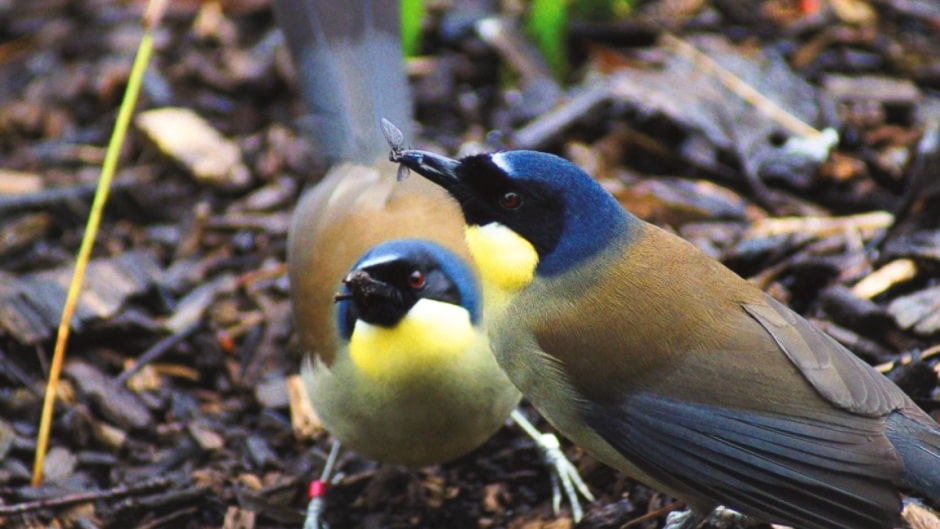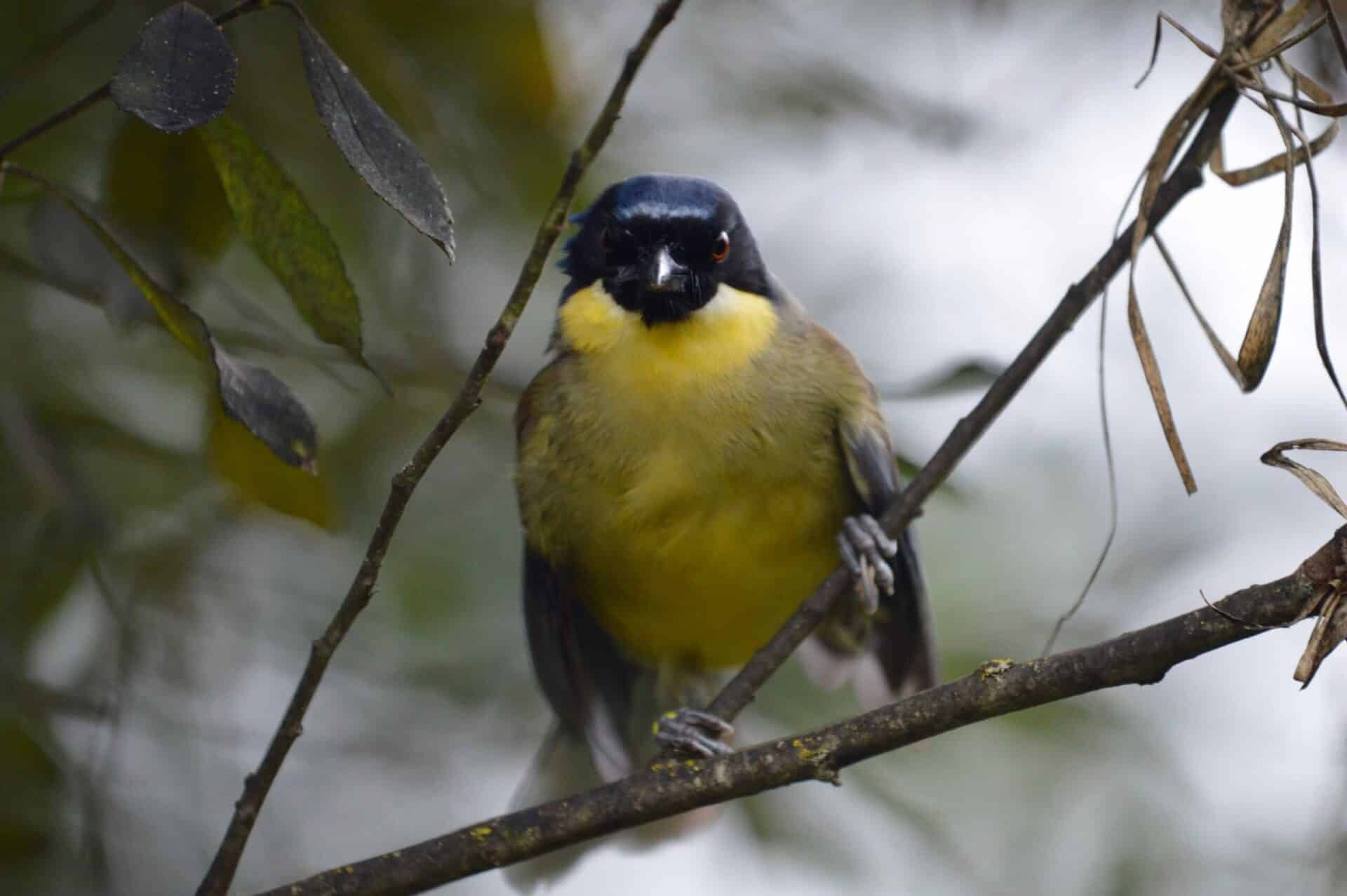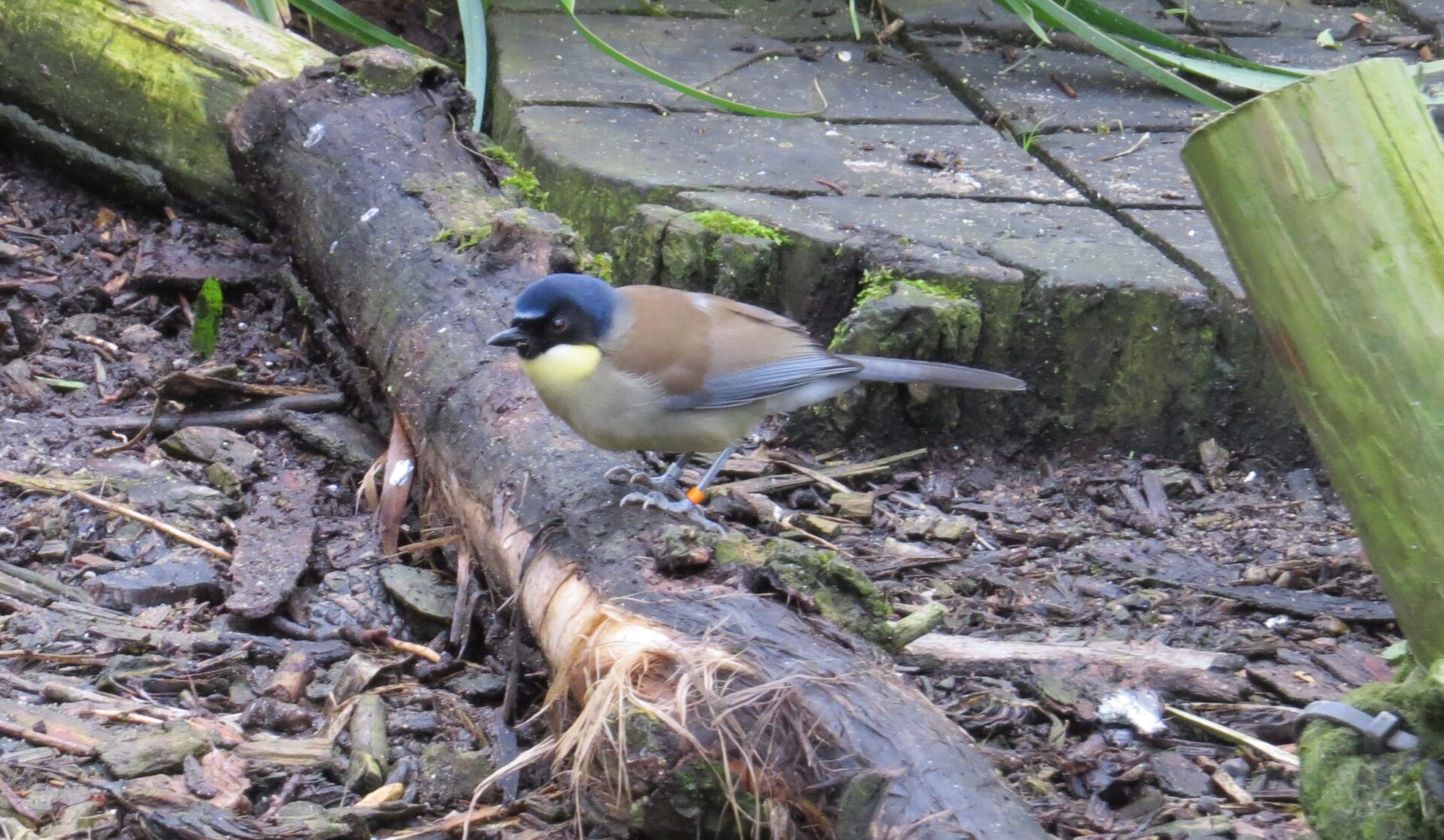Blue-crowned laughingthrush
Common Name: Blue-crowned laughingthrush
Scientific Name: Garrulax courtoisi
Blue-crowned laughingthrushes are very sociable. They form close family groups, and young from earlier broods will help to rear younger chicks.
This critically endangered species, endemic to China, was thought to be extinct until 1988 when it reappeared in the International pet trade. It is believed now that a small population of around 300 birds still exists in southeast China, and captive populations in zoos around the world is currently monitored and managed by WAZA (World Association Zoo and Aquaria).
Fast Facts
-
Status
Critically Endangered
-
Size
Height: 24-25 cm
-
Weight
50g
-
Gestation
14 days
-
Young
3-5 eggs are laid
In the wild
Blue-crowned laughingthrushes eat invertebrates and seeds, but mainly feed their chicks on insects. These birds forage in large flocks of up to 40 individuals. They forage on the ground as well as in bushes and trees; they will turn over leaf litter on the ground, pick out invertebrates on tree trunks and cling to the leaves of climbing plants to search for insects.
These laughingthrushes are only found in a small area in eastern China. They are found in evergreen and deciduous forest and forest patches, in bushy areas next to these forests, as well as in clumps of trees near human settlements.
Blue-crowned laughingthrushes are social birds and can live in family groups, where young birds may help their parents to feed and raise the latest chicks.
In the wild the breeding season for these birds is from April to July. An open cup-shaped nest is made of twigs and grasses, and it is lined with dry grasses. These nests are made in trees at heights of around 4 to 15 metres, and the female will lay 3-5 eggs inside the nest. Chicks hatch around May and early June after an incubation period of around 14 days.
The chicks are cared for and fed by both parents, and in some cases chicks have even been seen being fed by other adults. The young chicks leave the nest (fledge) after about 16 days, and the parents can go on to have a second brood of chicks.
Little is known about the predators of blue-crowned laughingthrushes, although red-billed blue magpies are presumed to be nest predators, because they have been seen being chased away from nests by breeding laughingthrushes.
Blue-crowned laughingthrushes used to be trapped in large numbers to be sold as pets. However, in 1998 an export ban stopped this trapping. However, these birds face a number of current threats, including road building and urban development, which has destroyed nesting and roosting habitats. Blue-crowned laughingthrushes are not protected, and nests built inside schools have been destroyed by students. This species has a very small population (fewer than 350 in 2016), which means it could be affected by a loss of genetic diversity.
A number of initiatives are helping to conserve this species. A small number of protected areas have been established. Studbooks have been set up to coordinate and track the blue-crowned laughingthrushes which are kept in captivity in zoos and private collections. Education work has been carried out in local schools in eastern China, where bird monitoring groups have now been established.
The captive populations of Blue-crowned laughing thrush are subject to a Global Species Management Plan in the UK and the US and have been included in an EAZA Ex-situ Programme (EEP) since 2015.’


